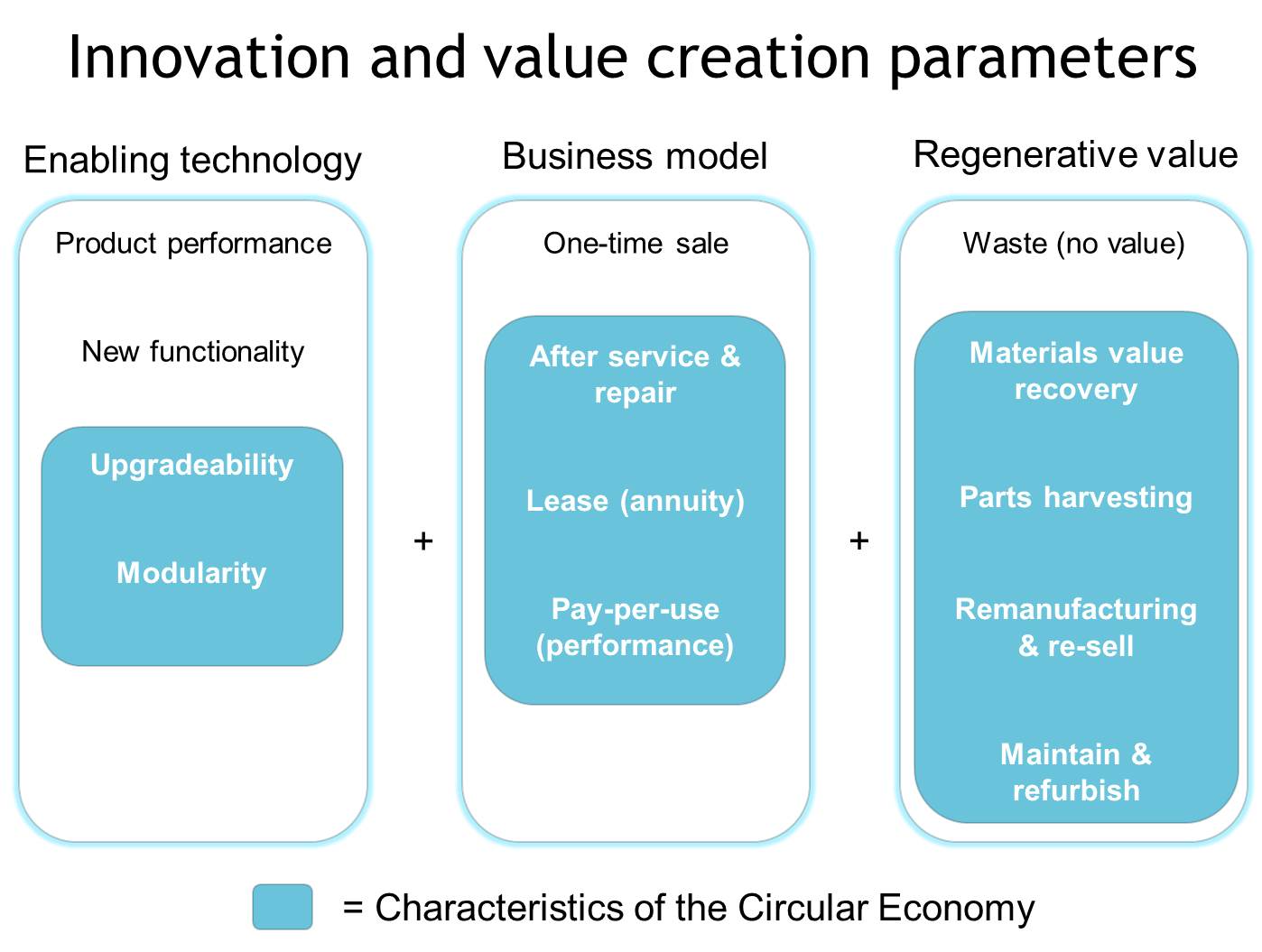
This months guest blog is from Andy Hall. Andy is a Circular Economy Consultant at Sustainable Value Cycle Solutions LLP
I often hear feedback that the Circular Economy is nothing new and much cited examples, such as photocopiers and refurbished auto transmissions, just happen to fit with the concept. To a certain extent I agree but, the real economic advantage of the Circular Economy is generating recurring revenue in a managed system that is part of the business proposition.
Business Model: According to the studies conducted by Doblin (Ten Types of Innovation), business model innovation delivers far more value at lower investment cost than traditional product development. Groepe SEB, the parent company for Tefal, Moulinex, Krups etc. introduced a service and repair policy that not only delivered a 21% saving on costs of non-compliance and cost per intervention, but also boosted consumer brand loyalty. Moving to a lease or a performance model lowers the threshold to step in and allows companies to manage the product return loops, not to mention increasing the number of customer touch points. Performance models can also be tailored to variable tariffs and more effective use of idle time. Just think of the price of a MRI scan at an off-peak time leading to lowered medical insurance premiums.
Enabling Technology: Traditionally, product performance improvement or development of new functionality is the driver for innovation but then these new improved products enter an unmanaged system where the value is no longer retained by the manufacturer. When the use environment is managed by the manufacturer extra value creation can be achieved by offering products that are modular and upgradable. Not only will these products last longer in the market but the value of the function will be maximised as it is possible to bring it fully up to date. This will be the real commercial advantage for the Phonebloks mobile phone being developed by Google. When software is involved up-gradeabilty becomes an online transaction at a very low cost.
Regenerative Value: In the take-make-waste economy there is little or no regenerative value and waste is the zero value remainder. In a business model that caters for several usage loops (service, remanufacturing, parts harvesting and materials recovery) it is in the interest of the manufacturer to keep the value at the highest level, and that involves the function of the product. The materials are frequently function carriers and have much less value than a working product. Remanufactured products can be sold on to secondary markets that were difficult to enter at the original price point. This can be a significant growth opportunity for companies competing in already saturated European and North American markets.
So is the Circular Economy concept really innovative? Well, by combining an enabling technology with a new business model and a source of regenerative value, yes it is! Further, product development for this kind of situation will lead to new product design featuring modular and upgradable construction.
A Circular Economy approach not only decouples economic growth from environmental impact but it also provides businesses an integral strategy that responds to global business trends such as “access over ownership” and “from transactions to relationships”.
I would say that you have to take all of these aspects into account to see the true innovative nature of a Circular Economy strategy.
Sustainable Value Cycle Solutions LLP www.andyhall-svcs.com

